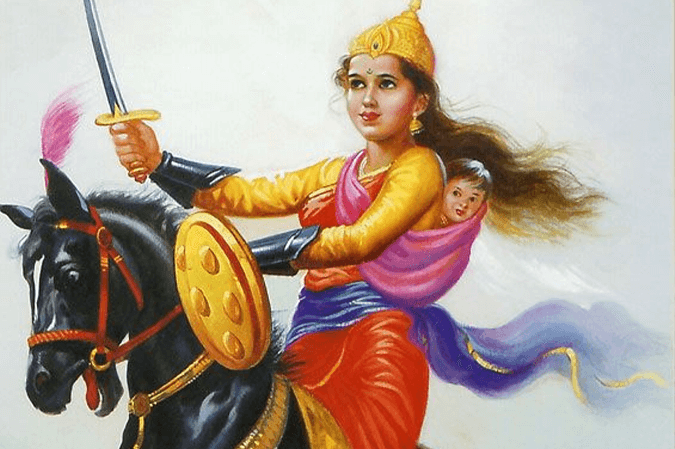Rani Lakshmibai
The uniqueness of Her Name
Lakshmibai, also known as the Rani of Jhansi, is a name that symbolizes bravery, resistance, and the struggle for independence. Born as Manikarnika Tambe on November 19, 1828, she became the Maharani of Jhansi through her marriage to Maharaja Gangadhar Rao Newalkar in 1842. The name “Lakshmibai” is derived from the Hindu goddess Lakshmi, representing wealth and prosperity, which reflects her royal status and the expectations placed upon her as a leader. Her reign and subsequent role in the Indian Rebellion of 1857 solidified her legacy as a national hero and an enduring symbol of resistance against British colonial rule.
Other Names Associated with Lakshmibai
Lakshmibai is often associated with several titles and figures that highlight her significance:
- Rani of Jhansi: This title underscores her role as a queen and a warrior who fiercely defended her kingdom.
- Jhansi ki Rani: A term of endearment that emphasizes her identity as the beloved queen of Jhansi.
- The Warrior Queen: This designation reflects her remarkable leadership during the Indian Rebellion of 1857, where she fought valiantly against British forces.
These names illustrate how Lakshmibai has been memorialized in various contexts, reinforcing her status as an iconic figure in Indian history.
Cultural Significance
Lakshmibai’s involvement in the Indian Rebellion of 1857 marked a significant chapter in India’s struggle for independence. After the death of her husband in 1853, the British East India Company refused to recognize her adopted son Damodar Rao as the rightful heir, leading to the annexation of Jhansi under the Doctrine of Lapse. This injustice ignited her determination to resist British rule.
Her leadership during the siege of Jhansi was legendary; she rallied both men and women to defend their territory. Lakshmibai’s bravery inspired many to join the rebellion, making her a symbol of resistance. Despite ultimately losing Jhansi to British forces in early 1858, she continued to fight alongside other rebels, capturing Gwalior and proclaiming Nana Saheb as Peshwa.
Historical Context
The backdrop of Lakshmibai’s life was marked by growing discontent against British colonial policies. The Indian Rebellion began on May 10, 1857, in Meerut, quickly spreading across northern India. When news reached Jhansi, Lakshmibai took proactive measures to protect her kingdom and its people by forming an army and preparing for potential conflict.
In March 1858, British forces laid siege to Jhansi. Despite fierce resistance from Lakshmibai’s troops, the fort eventually fell. Following this defeat, she escaped with her son and joined forces with other leaders like Tatya Tope to continue the fight against British rule.
Legacy and Commemoration
Lakshmibai’s legacy endures as a symbol of courage and resilience in India’s history. Her defiance against colonial oppression has inspired countless generations. Statues, memorials, and literature celebrate her contributions to India’s freedom struggle. The Rani of Jhansi Regiment, formed during India’s independence movement, honors her legacy by promoting women’s participation in armed resistance.
Her life story continues to be retold in various forms—books, films, and educational curricula—ensuring that her spirit remains alive in contemporary discussions about nationalism and women’s empowerment.
Modern Significance of Her Name
Today, Lakshmibai’s name signifies more than historical rulership; it embodies ongoing struggles for freedom, gender equality, and national pride. Her legacy is invoked in discussions about women’s roles in social movements and leadership positions.
Cultural organizations honor Lakshmibai through events that promote awareness about women’s contributions to India’s independence struggle. Her story resonates with those advocating for justice and equality in modern society.
Conclusion
Lakshmibai remains an enduring figure whose life encapsulates themes of bravery, defiance, and leadership against oppression. Her unique name reflects a rich historical legacy intertwined with India’s fight for freedom from colonial rule. Exploring her legacy—her name, cultural significance, historical context, and modern relevance—provides insight into how one individual’s actions can inspire generations toward justice and equality.
Lakshmibai’s story challenges us to recognize all individuals’ contributions to history while reminding us that the quest for freedom is ongoing. Her legacy encourages contemporary society to reflect on its values and strive toward inclusivity and empowerment for all citizens.
Sources:
- “Rani of Jhansi – Wikipedia.”
- “The Legend of Rani Lakshmibai – Gaatha Story.”
- “The Rani of Jhansi: A Symbol of Resistance to British Rule in India – Glasgow Museums.”
- “Lakshmibai, The Rani of Jhansi – QRH Museum.”
- “Rani Lakshmibai Biography – Jagran Josh.”
- Image Source: dollsofindia



